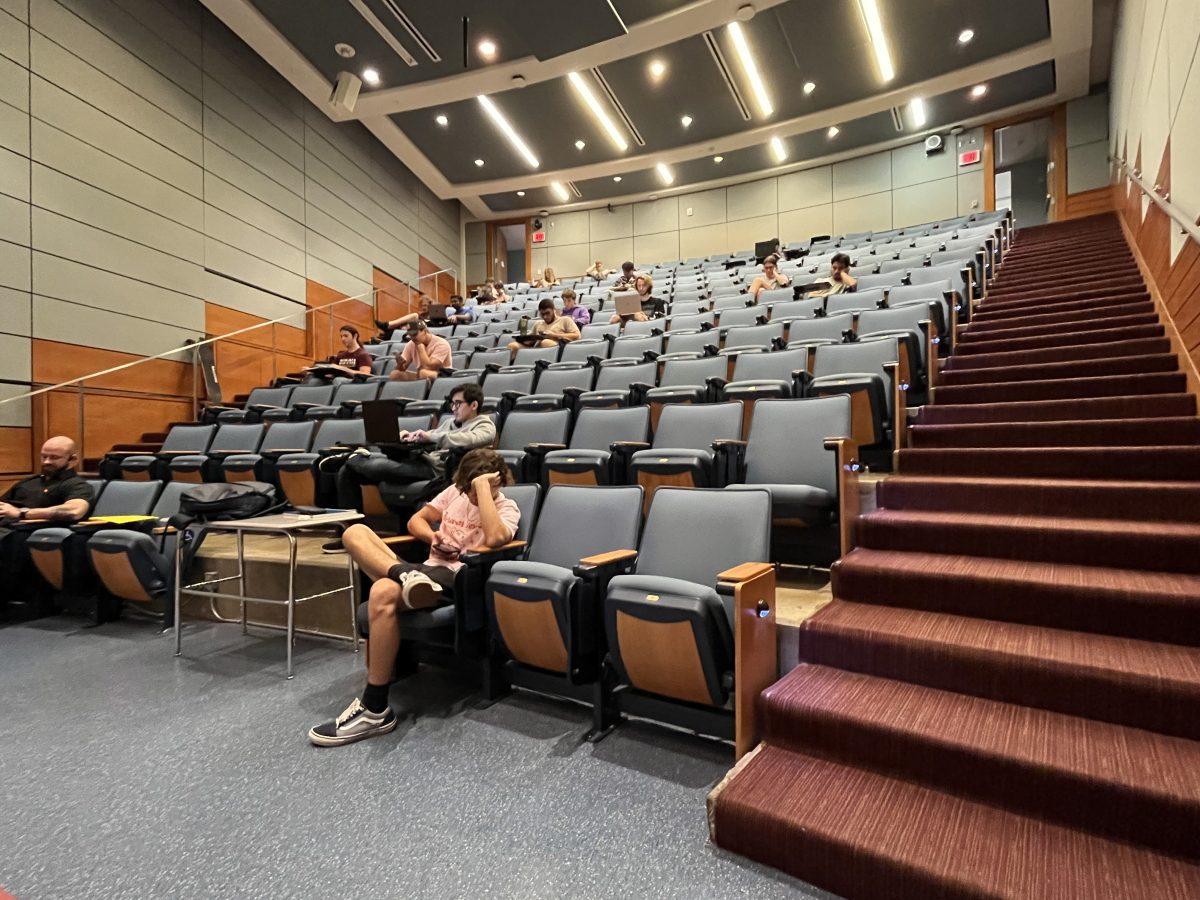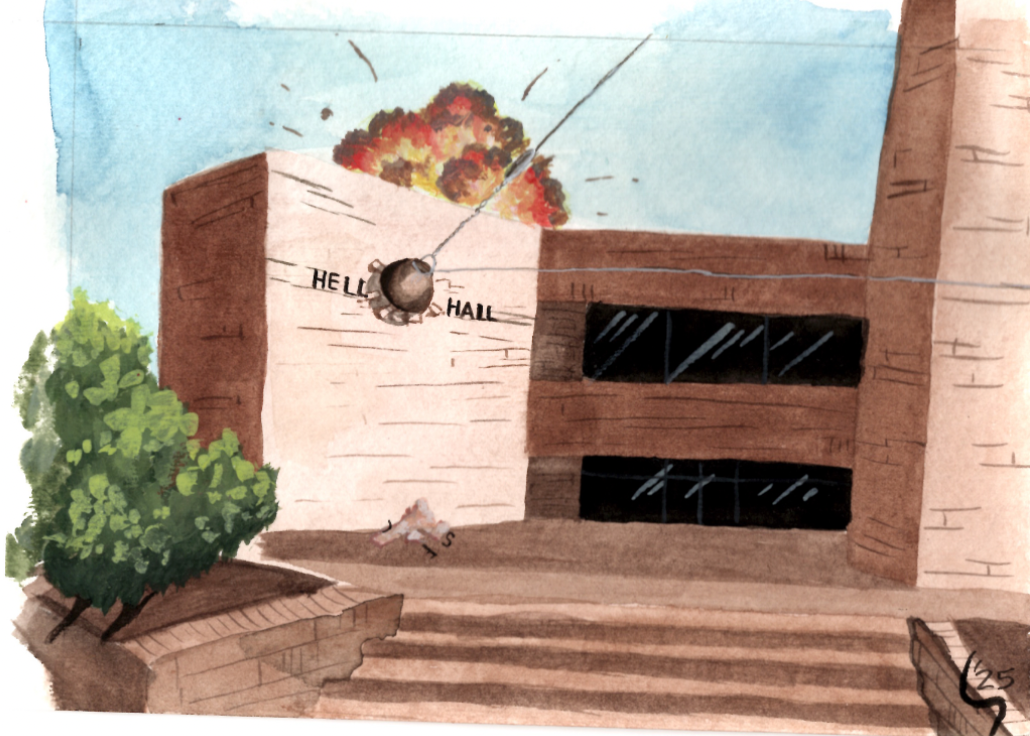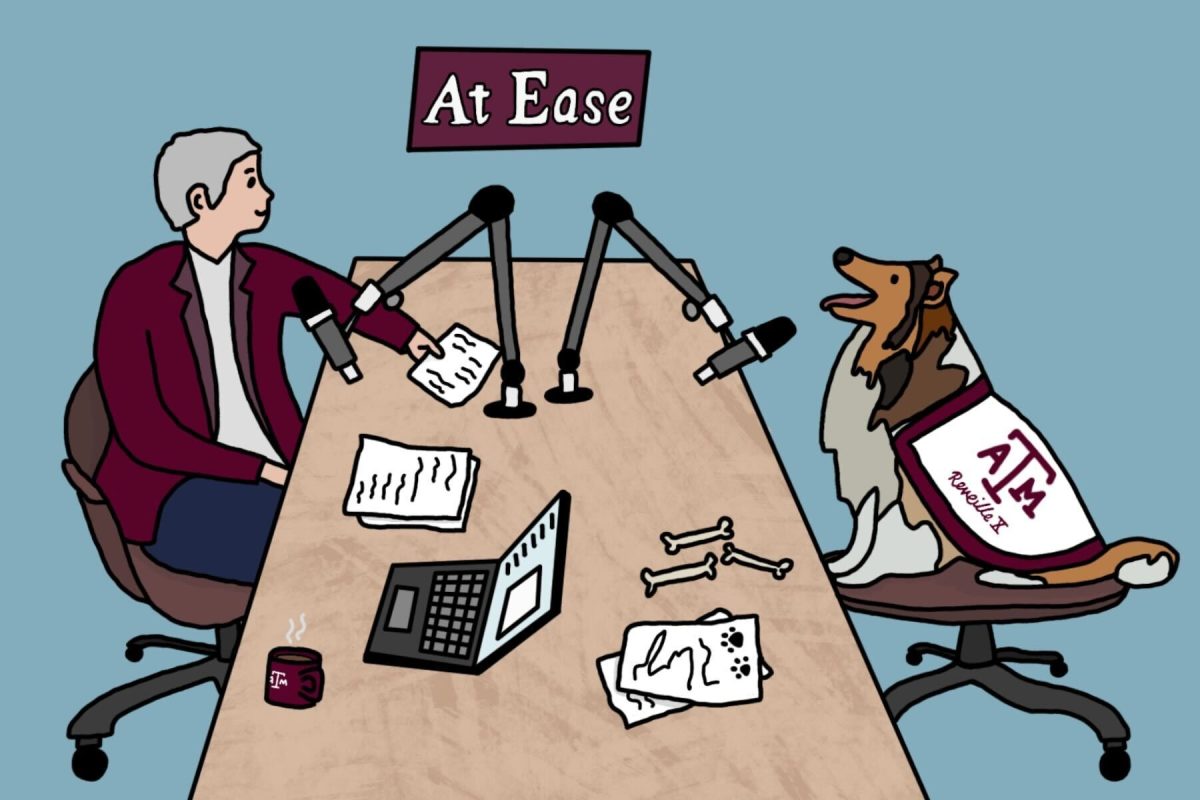Attention! This is a PSA to all students at Texas A&M: we’re in a pandemic. No, not the one that started in 2020. This one has surprisingly flown under the radar and appears to be confined to the classroom.
Early reports are saying it is highly contagious and possibly correlated to prolonged exposure to distractions on personal devices.
Common symptoms among the diagnosed include the inability to contribute to meaningful discussions, refusal to make eye-contact with professors, tuning out lecture material and a contorted posture that is usually hunched over a laptop. Witnesses are comparing the infected to ghoulish zombies.
In all seriousness, tell me this isn’t exactly how most lectures go down. Unenthused students drag their feet to class in an attempt to intermittently take notes in between iMessaging others and catching up on work for other classes.
While playing Snake and reviewing slides for other classes may seem harmless enough, there are a few problems with this behavior.
The most obvious dilemma is that you’re bumming out your profs, man. How would you feel if you became one of the nation’s best in your field of expertise and then were expected to gleefully instruct a class full of tepid guys and girls who start packing their bags five minutes before your 50-minute class ends? This is after they’ve scrolled through TikTok and sent Snaps the other 45-minutes, of course.
“They post the slides online, what’s the big deal?”
This is precisely the issue. When did it become normal for students to find skipping class a more productive use of their time than not?
For the students who do show up, that’s great. I applaud you. I’m sure every professor enjoys a full classroom, but what difference does it make if you’re not actually going to be fully present?
And yes, I know this isn’t indicative of every student — there are always a few good ones in every class. Nonetheless, it’s hard for a professor to drive home a point if they’re forced to extract answers from the same four students every time they ask a question.
Take it from Jennifer Mercieca, Ph.D., a rhetoric and cultural studies professor here at A&M. She noticed first-hand a drop in students’ engagement over the last few semesters and attributed it to a change in what is deemed acceptable inside the classroom.
“When I was in school, I was always the student who wanted to sit and argue with the professor, and I feel like that’s how you get the most out of college,” Mercieca said. “You just don’t get that anymore.”
When students come to class and are glued to their laptops, Mercieca said she feels left in the dark. “I’ve always assumed that students must be very overburdened with other work and are likely doing the readings for other classes.”
Sadly, this is something we’re all guilty of at some point or another — I’m no exception. However, I’d say this is a problem that goes beyond students just being attached to their devices.
From my perspective, as a student in this age of high-tech innovation, part of the problem is that technology has outpaced our traditional learning model. The college learning structure is roughly the same as it was 40-years ago: show up, sit down and take notes over what’s on the board. Don’t even get me started on the fact scantrons are still a thing.
When students can share their notes with the press of a button or watch crash course videos covering the same material covered in lecture, there is little motivation to show up.
Sharing a similar sentiment, communication junior Emily Hansen said most classrooms are suffering due to a lack of creative approaches.
“Professors get up there and teach straight from the powerpoint, which we already have access to after class … so it’s like the thing that would motivate us to go to class is missing,” Hansen said.
Hansen also said professors used to be the sole bearers of this information, which is no longer true.
“It’s almost like we’re just here just to get our degree,” Hansen said. “You can find almost anything the professor is teaching online, but you’re not going to get a degree from A&M online.”
So, how do we bridge this divide between professors and the rising army of the undead students? I’m afraid it’s not as simple as doing away with technology or prohibiting professors from posting their slides on Canvas.
Instead, this change can only start with people working together to find better ways to implement technology while also building synergetic environments students can’t get outside of the classroom.
“I feel like I go all in,” professor, Ph.D. student and resilience coach Andrew Christjoy said. Christjoy teaches two communications courses and has steadily built a reputation among students and staff as being a captivating teacher.
“There is maybe a mystique at the university level where you [professors] have to be reserved and professional … but I also feel like people really appreciate energy and passion,” Christjoy said.
Having started his profession in special education, this is the area to which he attributes most of his success inside the classroom. Christjoy says his biggest takeaway was figuring out how to accommodate students with various disabilities and then catering towards the areas of learning that worked for them.
“Nowadays it’s not like you just have their [students’] respect, you have to earn it,” Christjoy said. He thinks this is entirely achievable through collaboration and more engaging lesson plans.
Above all, Christjoy noted professors need to make personal connections with their students.
“I care about them as people, and if we lose that and simply structure education to checking things off a box … then I think we’re completely missing our mission in academia,” Christjoy said.
Based on Christjoy’s advice and student input, it is apparent that professors need to build lectures around their personal strengths and encourage open discussions. As for us students, we need to prioritize our professor’s time and realize that the benefits of interacting in a classroom will no longer be available to most of us after our brief four years at this institution are over. What exactly do we gain from taking this privilege for granted?
Well, there you have it. The cure to students’ zombified habits lies not in a miraculous antidote but in efforts to create instruction that mirrors human connection. If we continue to allow our classroom to wither up and die, we can’t be surprised when students follow suit.
Benjamin Barnes is a telecommunication media studies senior and opinion columnist for The Battalion.

















